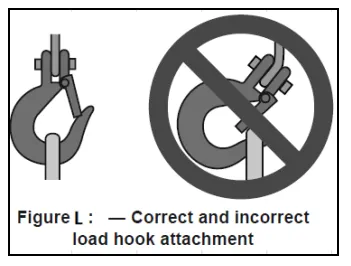Advantages and Applications of Roof Gantry Cranes in Modern Construction Industry
Understanding Roof Gantry Cranes A Comprehensive Overview
In the world of industrial lifting and material handling, gantry cranes serve as indispensable tools for a variety of applications. Among the diverse types of gantry cranes, roof gantry cranes stand out due to their specific design and operational benefits. This article aims to explore the features, advantages, and applications of roof gantry cranes, offering insights into their importance in modern industries.
What is a Roof Gantry Crane?
A roof gantry crane is a type of crane that is supported by a frame constructed in the shape of a bridge. It typically features two legs that move along tracks and a horizontal beam that supports the lifting mechanism. Uniquely, a roof gantry crane operates beneath a building's roof structure, allowing it to maximize vertical space while offering powerful lifting capabilities. These cranes are often used in warehouses, manufacturing facilities, and construction sites.
Key Features
1. Space Optimization One of the most significant advantages of roof gantry cranes is their ability to operate in confined spaces. By utilizing the existing infrastructure of a building, they free up floor space typically occupied by traditional cranes.
2. Versatility Roof gantry cranes can handle various loads, from lightweight materials to heavy equipment, making them suitable for diverse industrial applications. They are equipped with adjustable hoists that provide flexibility in operations.
3. Stability and Safety The design of roof gantry cranes emphasizes stability, with features such as anti-sway technology and multiple safety mechanisms to prevent accidents. Operators can maneuver loads with precision, enhancing workplace safety.
4. Customization These cranes can be tailored to fit specific operational needs, including alterations in height, lifting capacity, and rail systems. This customization ensures that companies can optimize their material handling processes effectively.
Advantages of Roof Gantry Cranes
1. Increased Efficiency The design and operation of roof gantry cranes lead to improved productivity. Workers can lift and move materials swiftly, reducing downtime and streamlining operations.
roof gantry crane

2. Cost-Effectiveness By utilizing existing structural support, roof gantry cranes can be less expensive than installing new overhead cranes. The reduced requirement for building modifications results in significant cost savings.
3. Reduced Ground Footprint Unlike traditional cranes that require significant ground space for their operation, roof gantry cranes minimize their footprint, allowing for more effective space utilization within a facility.
4. Enhanced Safety Features Roof gantry cranes often come equipped with advanced safety systems, such as overload protection and emergency stop features, ensuring a safe working environment.
Applications
Roof gantry cranes are widely used across various industries due to their versatility and efficiency. Some common applications include
- Manufacturing In manufacturing facilities, roof gantry cranes are used to lift heavy machinery and components during assembly processes. - Warehouse Operations These cranes play a crucial role in warehouses, where they assist in the hoisting and moving of pallets and large items stored on high shelves.
- Construction Sites During construction projects, roof gantry cranes help misplacement of heavy materials like steel beams or concrete blocks, significantly speeding up the building process.
- Maintenance and Repair In maintenance operations, roof gantry cranes facilitate the lifting and movement of equipment during repairs, ensuring smooth and efficient servicing of machinery.
Conclusion
The roof gantry crane represents a vital innovation in the field of material handling. By maximizing space, enhancing efficiency, and ensuring safety, these cranes have become essential for various industries. As companies continue to seek ways to improve productivity while optimizing operational costs, the relevance and demand for roof gantry cranes are likely to remain strong in the foreseeable future. Understanding their benefits and features can help businesses make informed decisions about their material handling solutions, ensuring a safer and more efficient work environment.
-
Unlock Seamless Relocation with Our Heavy Equipment Moving ExpertiseNewsJun.06,2025
-
Unleash Unrivaled Flexibility with Our Adjustable Gantry CraneNewsJun.06,2025
-
Unleash Heavy-Duty Efficiency with Our Industrial Gantry Crane SolutionsNewsJun.06,2025
-
Revolutionize Steel Handling with Our Magnetic Lifter RangeNewsJun.06,2025
-
Master Equipment Mobility with Premium Machinery Mover SolutionsNewsJun.06,2025
-
Elevate Your Material Handling with Magnetic Lifter TechnologyNewsJun.06,2025
-
YS Permanent Lifting Magnets: The Smarter Way to Handle SteelNewsMay.22,2025
